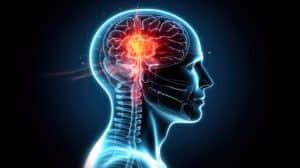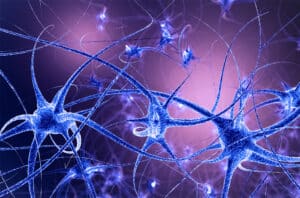Think of a classic road atlas — the kind you might keep in your glovebox to navigate through winding country roads in case of low cell reception. Just as a road atlas creates a clear path for driving, a human brain atlas creates a detailed path of the human brain for neurological research. Now, per the MIT Technology Review, scientists from Harvard and Google have created a three-dimensional, nanoscale-resolution map of a single cubic millimeter of the human brain. The project, which was published in Science, only covers a tiny fraction of the brain. It is, however, the highest-resolution picture of the brain ever created. Read on to find out more about the strategy implemented during this research, as well as the ongoing implications of complex brain mapping.
What Is a Human Brain Atlas?
As explained above, a human brain atlas is a comprehensive reference tool that provides information about the organization of the human brain. Created through a variety of imaging techniques and brain tissue analysis, these atlases serve different purposes for researchers — honing in on cell organization or gene expression, for example. The recent project facilitated by Harvard and Google researchers focused specifically on “connectomics,” the term for the connections between cells facilitated by neurons.
Challenges of Creating a Human Brain Atlas
The human brain is a wildly complex organ, and researchers face a variety of challenges during mapping projects. For this particular project, the challenges included the following:
- Finding a sample: Cadaver tissue is typically too deteriorated for brain mapping purposes. Instead, this team used a piece of tissue that was being surgically removed from an epilepsy patient’s brain to reduce the patient’s seizures.
- Preserving the sample: The team had to preserve the brain sample in resin so that it could be cut into slices for analysis. The slices were incredibly thin — 5,000 slices, each about a thousandth of the thickness of a human hair, per the MIT Technology Review.
- Tracing complex brain connections: After preserving and slicing the sample, the team scanned them with a high-speed electron microscope. After scanning the brain sample, the team faced the biggest challenge yet: reconstructing 100 million brain connections made up of thousands of tiny neurons.
Implications of Mapping the Human Brain
This brain atlas has major scientific implications as the highest-resolution picture of the brain ever created. The map is currently available on a web platform called Neuroglancer and is meant to be used by other researchers beginning their own neurological research. This highly detailed map also led the research team to some surprising discoveries; for example, some of the axons that transmit signals between neurons form multisynaptic connections with up to 50 synapses, although it was previously assumed that each axon forms only a single synaptic connection. By creating a high-resolution public brain atlas, the team has paved the way for other researchers to make similar discoveries, further unlocking the secrets of the human brain.
_____
From neuron mapping to in-depth analysis of individual signal transport mechanisms within the brain, this advanced brain atlas is an important next step in neurological discovery. Furthermore, by placing the atlas in the public domain, the team has created an undeniably groundbreaking resource for researchers around the world.
Scantox is a leading European preclinical GLP-accredited contract research organization (CRO). Since 1977, Scantox has been a trusted partner for in-vivo preclinical research services in the pharmaceutical and medical device industries. Our services and expertise enable clients to progress their drug or device development based on consistent, high-quality, solid data to the highest technical and scientific standards. Scantox services support a broad spectrum of preclinical drug development elements, from lead optimization within in vitro and in vivo efficacy models, CNS/neurology, formulation development, and regulatory toxicology studies all the way to manufacturing and distribution of products for clinical trial phase 1 and 2. For more information about our company, visit https://scantox.com/about-scantox/.









